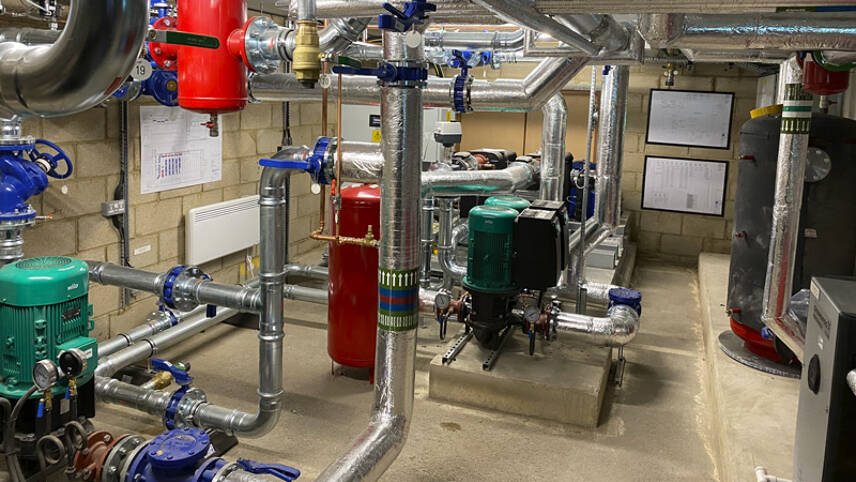Register for free and continue reading
Join our growing army of changemakers and get unlimited access to our premium content

Pictured: One of the air-source heat pump systems. Image: John Lewis Partnership
The supermarket, which is part of the John Lewis Partnership, confirmed this week that it has completed the installation of five heat pumps at UK stores and is set to install at least another ten in 2023. The large-scale heat pumps are air-source and are replacing gas boiler systems used for store heating.
These installations could pave the way for a broader boiler phase-out across the Waitrose estate. Waitrose has more than 330 stores in the UK, including convenience locations and stores at Welcome Break motorway service stations.
The installation of the boilers will help Waitrose reach its ambition of reducing energy consumption by 25% by 2028, against a 2019 baseline. This target supports the retailer’s 2035 net-zero target for its own operations. Waitrose has stated that it has “accelerated” the deployment of some low-carbon heating technologies and energy efficiency measures due to the energy price crisis this year.
Aside from heat pumps, Waitrose is completing an estate-wide rollout of ‘Air Door’ technology. These devices blow a controlled stream of air across an opening to create an invisible barrier, minimizing the transfer of temperatures and smells. A common application in supermarkets is to shield the stores from outside temperatures when deliveries are taken.
Waitrose is also upgrading its fridges and lighting systems. On lighting, all stores are being converted to LEDs, which are more energy-efficient. Some locations have already seen their total electricity consumption decreasing by 10% due to an LED switch. Regarding fridges, Waitrose is phasing out refrigerants based on HFCs (hydrofluorocarbons) in favour of water-cooled systems. Efficiency improvements of 40% are expected.
John Lewis Partnership’s operations manager for energy and innovation, Neil Coleman, said: “No business is immune to rising energy costs. We’ve already set an ambitious plan to reduce our energy consumption and reach our goal of net zero emissions by 2035. With energy prices rising, we’re accelerating this. We’re focusing on heat recovery solutions and thermal efficiency to help lower the general heating and cooling load of our buildings.”
Earlier this week, a report from Cebr and Grundfoss revealed that barriers to accessing energy efficiency upgrades for many businesses – particularly SMEs – could lead to many missing out on £720m of energy bill savings each year. You can read our full coverage of that story here.


Please login or Register to leave a comment.